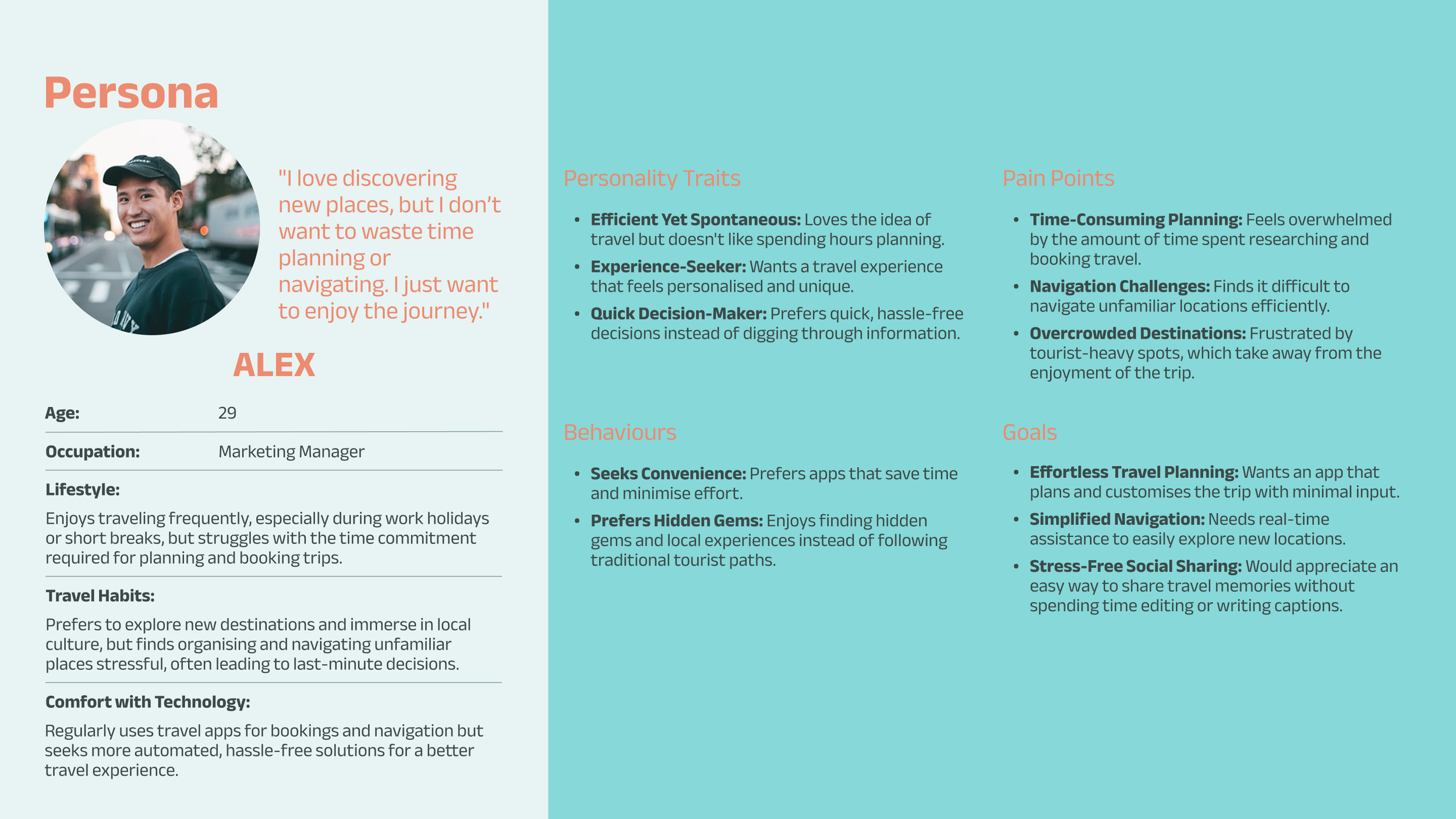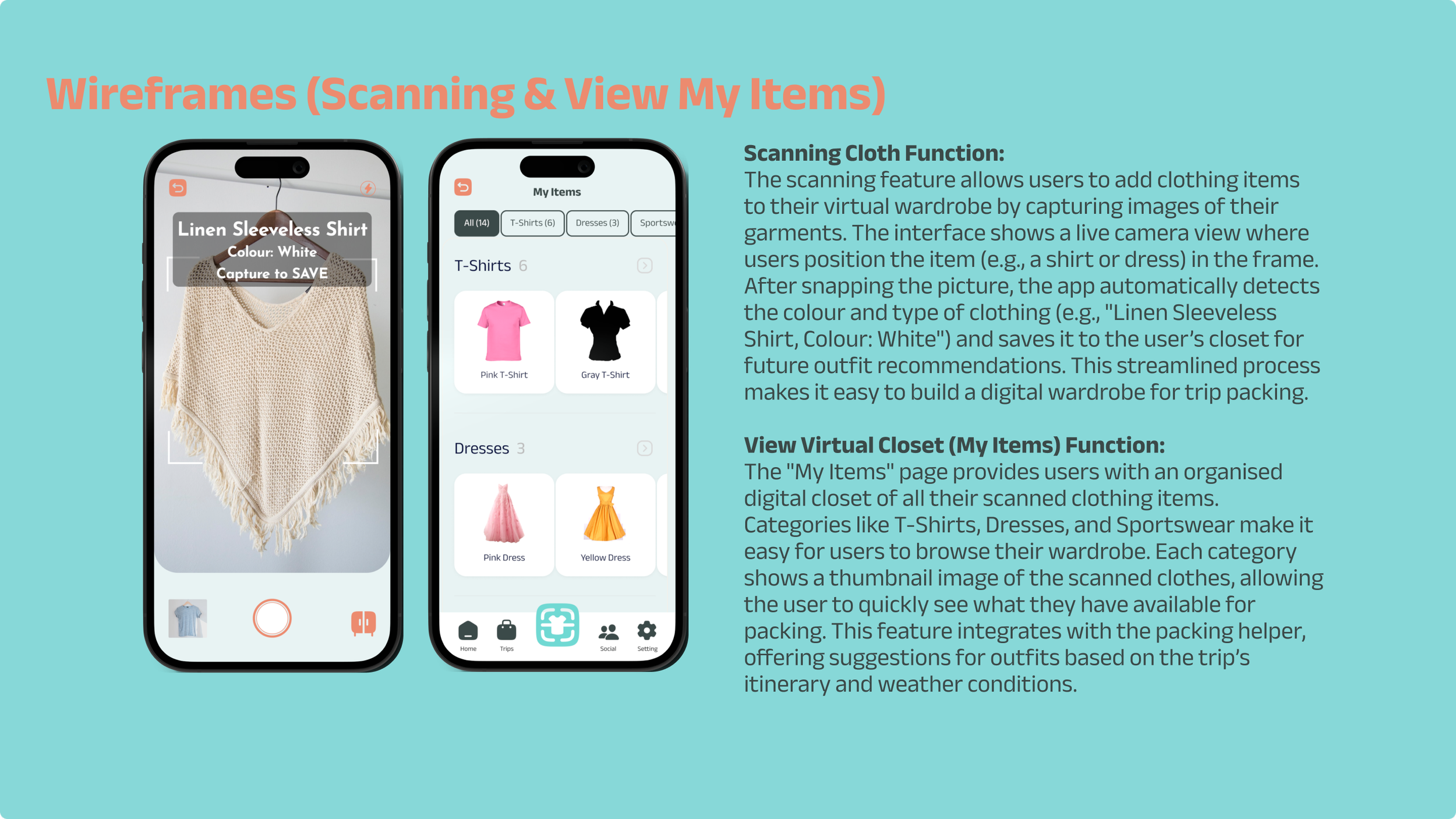
UI Design, UX Research, and Prototyping
ExploreEase: AI-POWERED ALL-IN-ONE TRAVEL COMPANION MOBILE APPLICATION
Background
The ExploreEase project aimed to design a speculative, AI-powered all-in-one travel companion that simplifies the complexities of trip planning, navigation, packing, and content sharing. Rooted in user research, the app addresses key pain points for modern travellers, particularly busy individuals and those unfamiliar with their destinations, by delivering a seamless and highly personalised travel experience through advanced AI integration.
Project Year – 2024
Project Type – Academic Project
My Role – UI/UX Design, User Research, Wireframing, Prototyping
Tools Used – Figma, Adobe Illustrator, Photoshop
Scope and Design Rationale
The scope included designing key features such as AI itinerary planning, real-time navigation with AR support, outfit matching through wardrobe scanning, packing assistance, and auto-generated social media content. The design rationale centred on crafting a clean, intuitive interface that empowers users to travel smarter and with less effort. Drawing from speculative design methods, the app envisions near-future possibilities where AI handles every logistical detail, allowing users to focus solely on enjoying the journey. The solution combines practical functionality with future-facing innovation, resulting in an experience that is efficient, adaptive, and deeply personalised.

IDEA
A smartphone application designed to streamline the entire travel experience. Powered by artificial intelligence (AI), the app helps users effortlessly plan trips, navigate unfamiliar destinations, pack efficiently, and auto-generate social media content, making smart, personalised travel accessible for busy and inexperienced travellers alike.
Design background
Travel Planning is Time-Consuming and Overwhelming
Planning a trip often requires hours of research to find flights, accommodations, and things to do. According to Priceline (2023), the average person spends the equivalent of two full workdays just planning and booking their trips. This can be especially daunting for busy people or those who aren't familiar with their destination.
Navigating Destinations Can Be Stressful
On top of planning, navigating tourist hotspots can be frustrating due to overcrowding. McKinsey (2024) points out that 80% of travellers end up visiting just 10% of the world’s top tourist spots, making these places overly crowded and less enjoyable. Efficient navigation tools and finding hidden gems can make all the difference in creating a more relaxed and enjoyable travel experience.
After conducting user interviews, it became clear that travellers desire a seamless, hassle-free travel experience that addresses these common challenges. The need for efficient travel planning, navigation and personalised recommendations was repeatedly emphasised. These findings align with current travel trends, where travellers seek convenience and personalisation in their journeys.
This project aims to integrate AI technology to simplify travel planning, packing, and navigation, offering users personalised itineraries and social media integration—all through a single, cohesive platform.
What-if question
What if AI could manage every aspect of travel planning and execution?
This concept explores AI’s potential to manage every aspect of travel, from organising trips to providing real-time navigation and packing suggestions, while also automatically generating content for social media. It envisions a future where travellers can enjoy their experiences fully, with AI handling all the details, making the entire journey seamless and highly customised.
User Flow diagram
FINAL THOUGHTS AND LEARNINGS
The ExploreEase project highlighted the potential of artificial intelligence (AI) to transform travel into a more seamless, personalised, and stress-free experience. By combining speculative thinking with user-centred design, I learned how to translate real-world travel frustrations into meaningful digital solutions. This project reinforced the importance of grounding innovation in user research, ensuring that even forward-looking features remain intuitive and practical. Through wireframing, prototyping, and scenario-building, I gained deeper insights into designing for emerging technologies and balancing complexity with clarity. Ultimately, the project showed how thoughtful design can empower users to explore the world with greater confidence, ease, and enjoyment.

















